Planting onions in spring
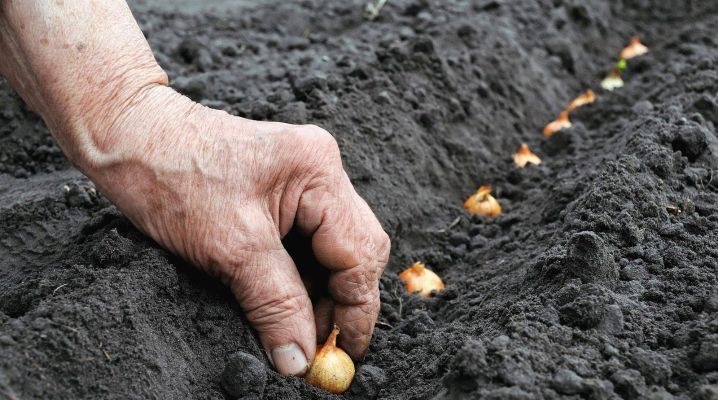
Onions are a versatile plant that can be used to prepare many dishes. Therefore, almost all gardeners plant it on their site. Planting operations are most often carried out in early spring.
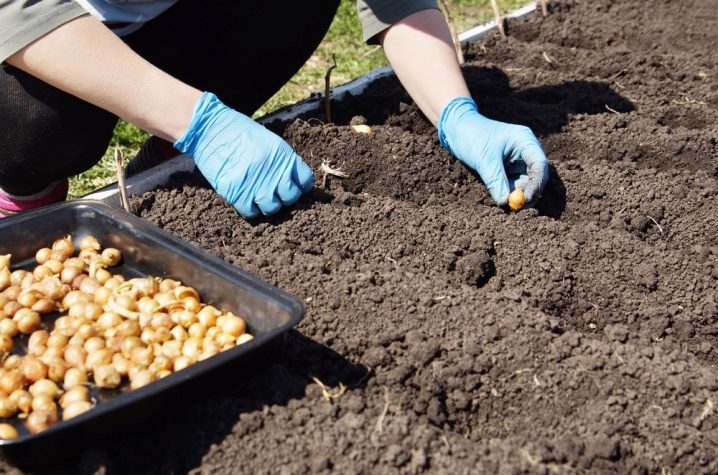
Timing
The quality of the future harvest depends on the time of planting onions on a turnip. They start planting onions early enough. Usually gardeners wait until the temperature rises to 13-14 degrees, and immediately start working.
The more specific planting time depends on the local climate. So, in the southern regions they begin to sow onions in mid-April, in the Leningrad region and the Moscow region - at the end of the month. In colder regions, onions are planted already in May.
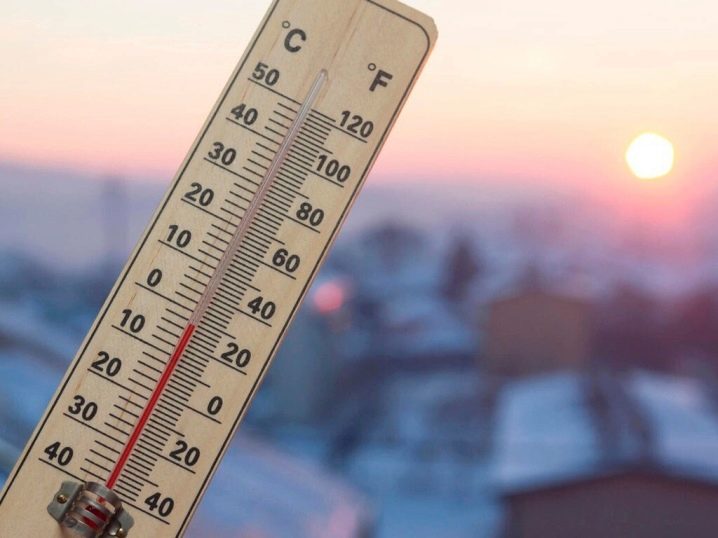
It is not recommended to delay planting onions. This will cause the plants to develop slowly. Therefore, you should not count on a good harvest.
To determine the date more accurately, gardeners are also guided by the lunar calendar. Onions, like other plants or seedlings, are not recommended to be planted on a full moon or new moon. It is best to do this on a waxing moon.
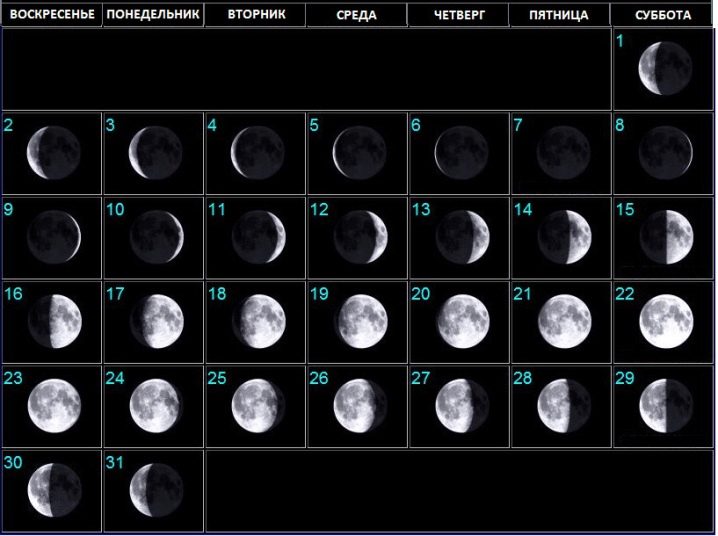
Preparation
Before planting onions, it is necessary to prepare both the planting material and the garden bed.
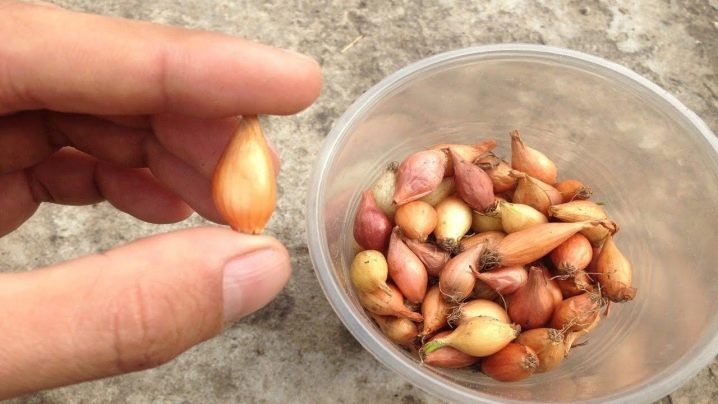
A place
It is recommended to choose a site for planting onions in open ground in the fall. When choosing it, you need to pay attention to the following points.
- Illumination... Onions grow very poorly in the shade. Therefore, it should be planted in sunny areas. Otherwise, the heads will be very small, and the greens will not be as juicy and tasty.
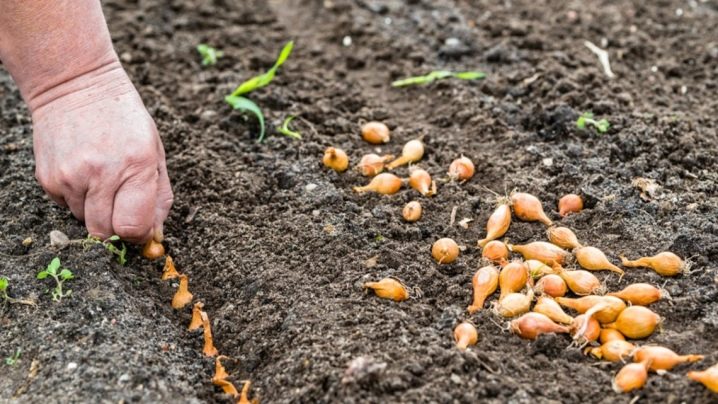
- The soil... Onions love loose and nutritious soil. It grows best in beds with black soil. The acidity of the soil should be low. If necessary, dolomite flour should be added to the soil. They do it back in the fall.
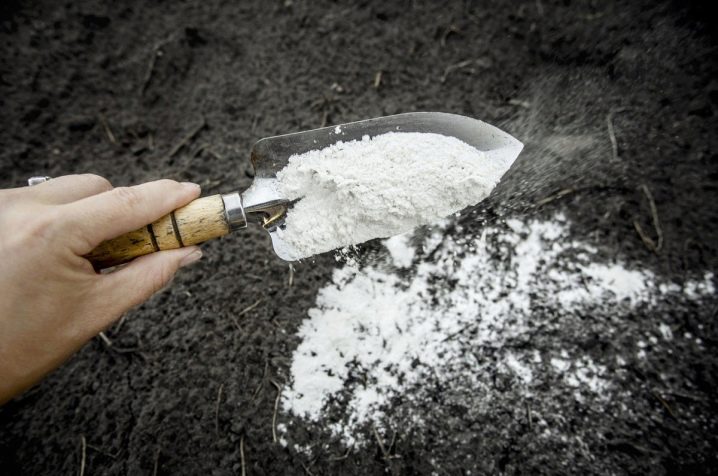
- Predecessors... Onions grown on a turnip or on a feather are recommended to be planted in an area where rye or legumes previously grew. The soil in such beds is loose and full of nutrients. Plants such as squash, eggplant, and potatoes can also be good precursors for onions. Do not plant onions after garlic, carrots and cucumbers. This will cause the bulbs to be small due to lack of nutrients in the soil.
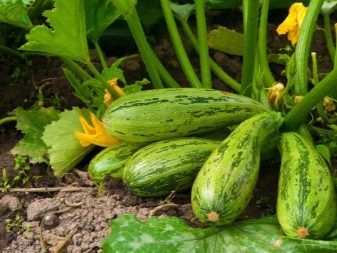
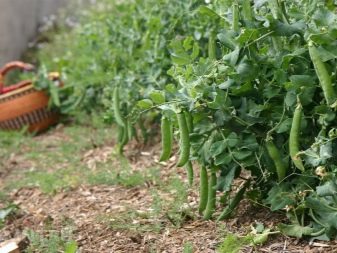
- Neighbors... When planning the onion planting scheme, it is important to consider which plants will be planted nearby. The best neighbor for this plant will be carrots. This plant repels the onion fly. You can also plant potatoes, cabbage, beets and peppers nearby. Onions grown on feathers coexist well next to herbs such as spinach, dill and parsley. Radishes and legumes will be bad neighbors for this crop. They need the same substances to grow. Therefore, onions develop very poorly next to such neighbors.
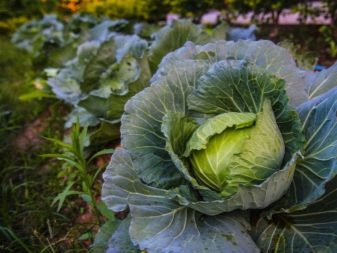
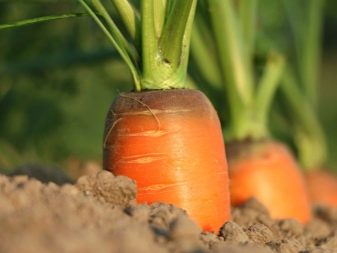
Having chosen a place for planting onions, the beds must be properly prepared. In the fall, the site is dug up. This helps to get rid of the pests. In addition, due to the digging of the site, the moisture in the soil after the snow melts lasts longer.
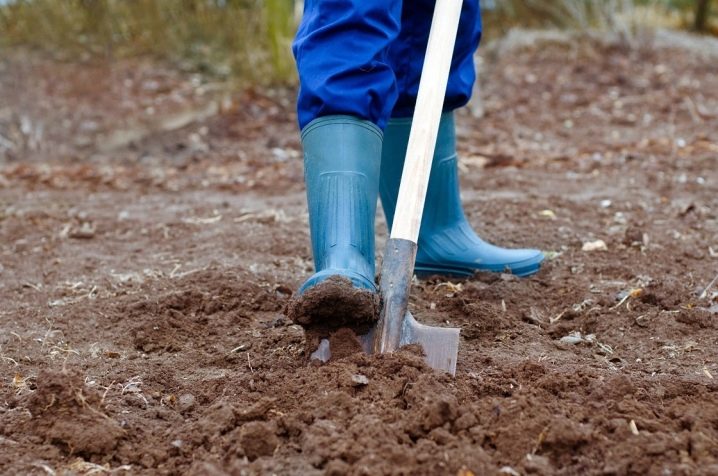
After digging, the soil must be fertilized. Usually gardeners use compost or manure. But it is quite possible to replace them with mineral fertilizers. In the spring, the site must be dug up again. Next, the ground is carefully leveled with a rake. After that, the soil is spilled with a solution of potassium permanganate or any other disinfectant.
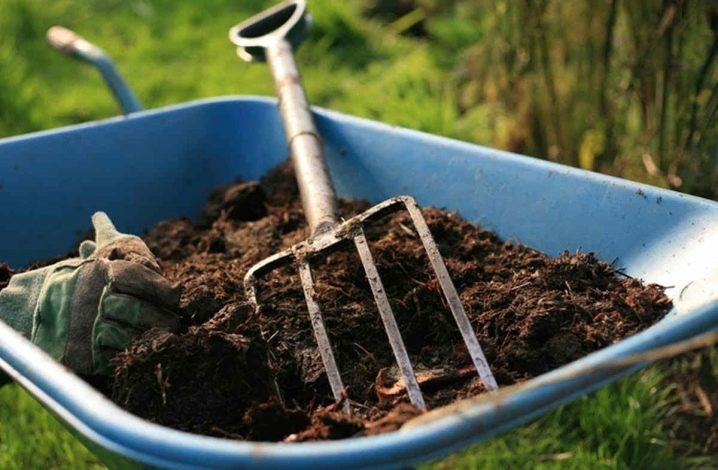
Planting material
Seeds and sets are prepared for planting in different ways. Each of them has its own characteristics.
It is recommended to do seed treatment 3-4 weeks before sowing. To begin with, the seeds must be checked for germination by dropping them briefly into a container with a saline solution. Floated specimens must be thrown away, and the remaining seeds must be rinsed under running water. To speed up the germination of seeds, they should be wrapped in a damp cloth and left in this form for a day. Next, the nigella must be tempered. For this, the seeds in a glass of water are placed in the refrigerator for several days. The water in the glass must be changed daily. After that, the seeds must be well dried and mixed with sawdust or sand.
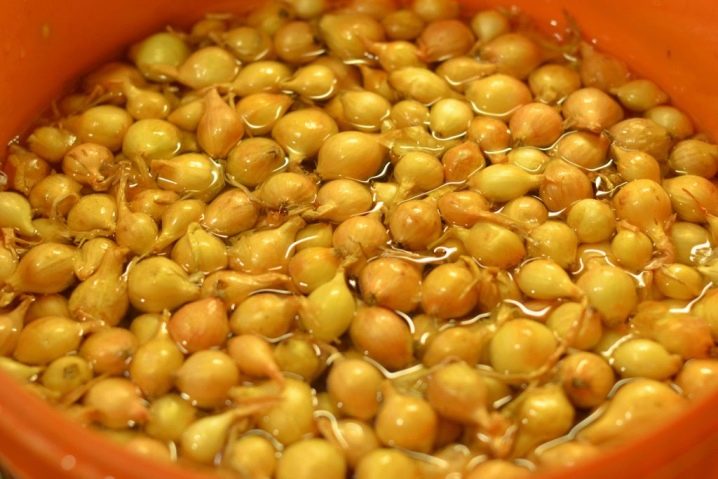
The sevka preparation process consists of the following steps.
- Calibration... The first step is to sort the onion. The sevok should be firm and large enough. Do not use wet bulbs or rotting specimens for planting. Next, you need to divide the entire set into several categories by size. Small bulbs are used for feather planting, large ones for head planting.
- Drying and warming up... If the seed was stored in a cool place, it must be well dried and warmed up a few weeks before planting. Usually, the onion is spread in a thin layer on the windowsill. There he should lie for 2-3 days. This procedure will help prevent diseases such as downy mildew and cervical rot from infesting the onion.
- Hardening... Then the sevok must be hardened. To do this, it is immersed first in hot water, and then in cold water. It is kept in each container for 5 minutes.
- Treatment with growth stimulants. You can speed up the process of seed germination by soaking it in a weak solution of nitroammofoska. Instead, you can also use complex fertilizers or stimulants such as Kornevin and Epin.
- Disinfection... For disinfection, the planting material is soaked in a weak solution of potassium permanganate. After this treatment, the seedlings are washed under running water and dried well. Disinfect the onion just before planting it.
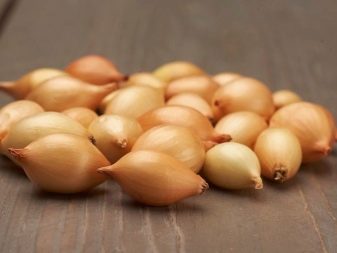
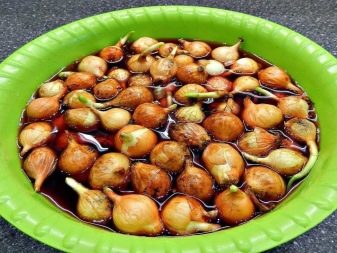
If you plan to plant onions on a feather, the tops of the bulbs are cut off. This should be done with sharp scissors.
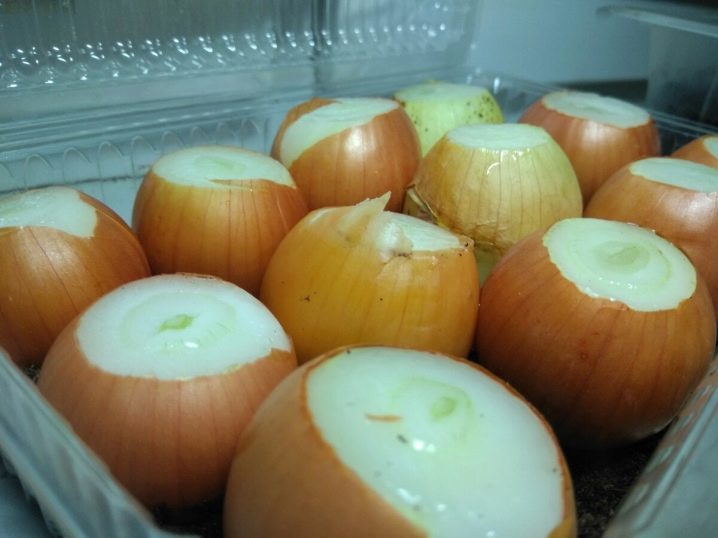
Correct processing allows not only to speed up the sprouting process, but also to improve the quality of the crop.
Landing technology
The onion planting pattern also depends on which planting material has been chosen.
Seeds
The first step is to prepare the holes in which the onions will be planted. The distance between them should be within two centimeters. If the onion is grown on a feather, the seeds are placed closer together. Row spacing is usually within 15 centimeters.
After sowing, the holes are covered with fertile soil. Next, the beds are watered and mulched. If the weather on the site is not warm enough, cover the plantings with a dark film. It will be possible to remove it after the first shoots appear.
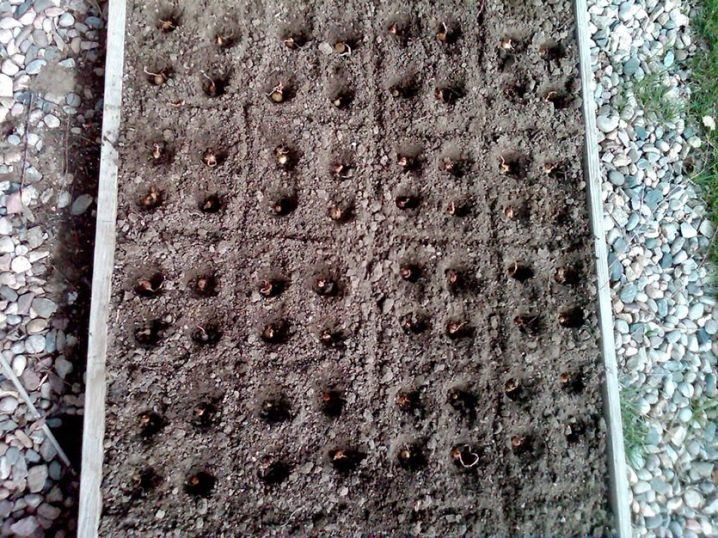
Sevok
When preparing furrows for planting sevka, it is worth considering the size of the planting material. Small onions are planted at a distance of 7-8 centimeters. The distance when planting large bows should be within 10 centimeters.
Do not place the bulbs too deep in the soil. The optimal depth is 4-5 centimeters... The grooves with the onions planted in them must be covered with soil. Some gardeners use dry wood ash at this stage. Sprinkle the onion with a thin layer of ash. In this case, the product serves as both a fertilizer and a means for disinfecting sections.
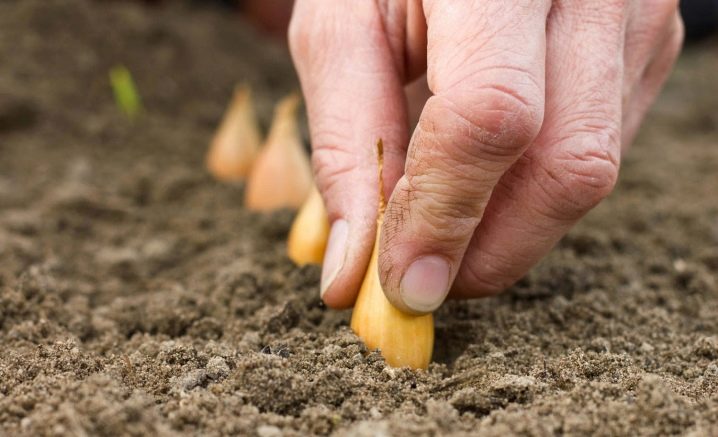
There are other methods of growing this crop.
- In boxes... You can grow onions on a feather in this way not only in the country, but also in your house or apartment. First you need to pick up a box of a suitable size and fill it with soil. You can buy soil mixture at the store or prepare it yourself. In the second case, it is enough to simply mix the soil with humus and peat in equal proportions. Sorted and processed in stimulants onions must be placed in the ground. The distance between the bulbs should be within 3 centimeters. Further, the planting is covered with a film. Then the box is placed on the windowsill. After the appearance of green shoots, the film is removed.
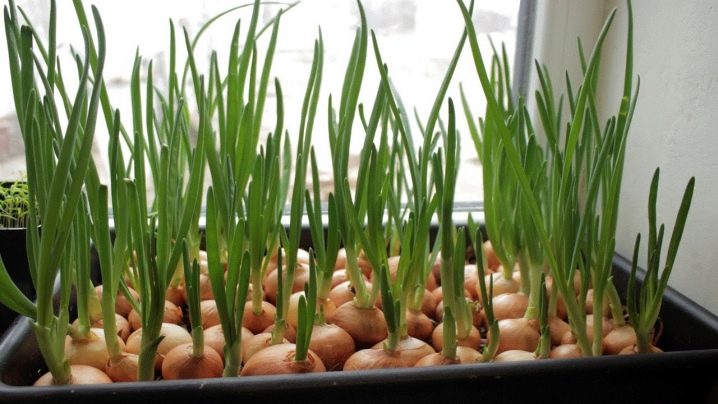
This method of growing onions is good because the gardener always has access to fresh herbs.
- On the ridges. This Chinese method of growing onions produces a large harvest. A place for planting plants is prepared in the fall. The soil is well fertilized. For this, you can use both mineral and organic fertilizers. In the spring, the bed is dug up again. After that, long ridges are formed on the site. The height of each of them should be within 15 centimeters. To improve the yield of onions, additional compost can be added to the soil. The distance between the rows should be at least 30 centimeters. The bulbs are placed in the middle of the ridge. From above they are carefully sprinkled with a layer of earth mixed with compost. Onions grown in this way should be watered regularly.


- In sawdust... This is another unusual way to grow onions. Before use, sawdust must be doused with boiling water. This will help disinfect them. Next, the sawdust is poured onto the ground in a dense layer. Small grooves are made in them. The distance between them should be within 20 centimeters. Shedding furrows with warm water. After that, you can start planting the onion. The distance between the bulbs should be within 10 centimeters. The sevok planted in this way should be sprinkled with a layer of sawdust and poured over with warm water. It is very simple to care for such beds. Water and feed the onions regularly. Weeds rarely appear under a layer of sawdust. Therefore, the gardener does not have to waste his time fighting them.
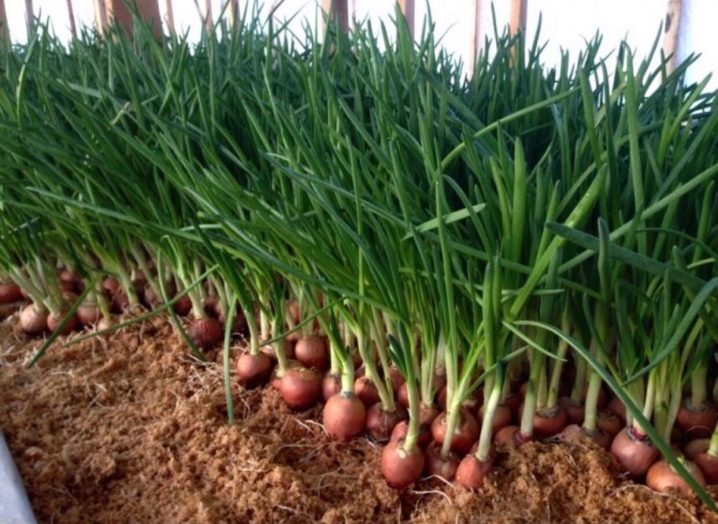
- In the compost heap. Experienced gardeners know that a variety of vegetables can be grown in a compost heap. Onions grow very well in such conditions too. A pile for planting plants must be prepared in advance. First, you need to fence it off with wooden planks. Next, a small amount of nutrient soil is poured over the compost. The onion is carefully buried in the ground. Further, it is also sprinkled with a small amount of earth. Bulbs grown in this way are large and well kept.
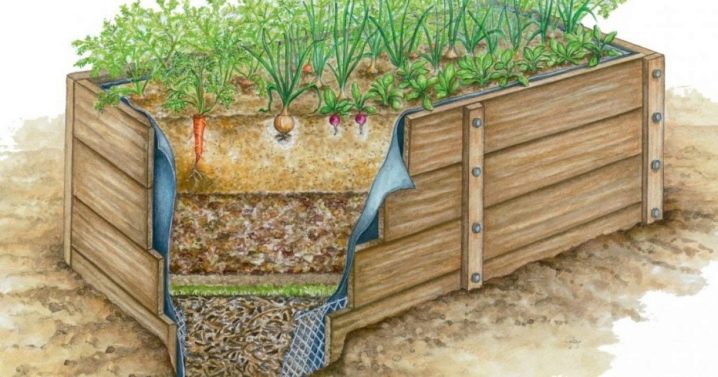
Knowing these simple rules and secrets, even owners of small plots can get a good harvest of greens, as well as red and white onions.













The comment was sent successfully.